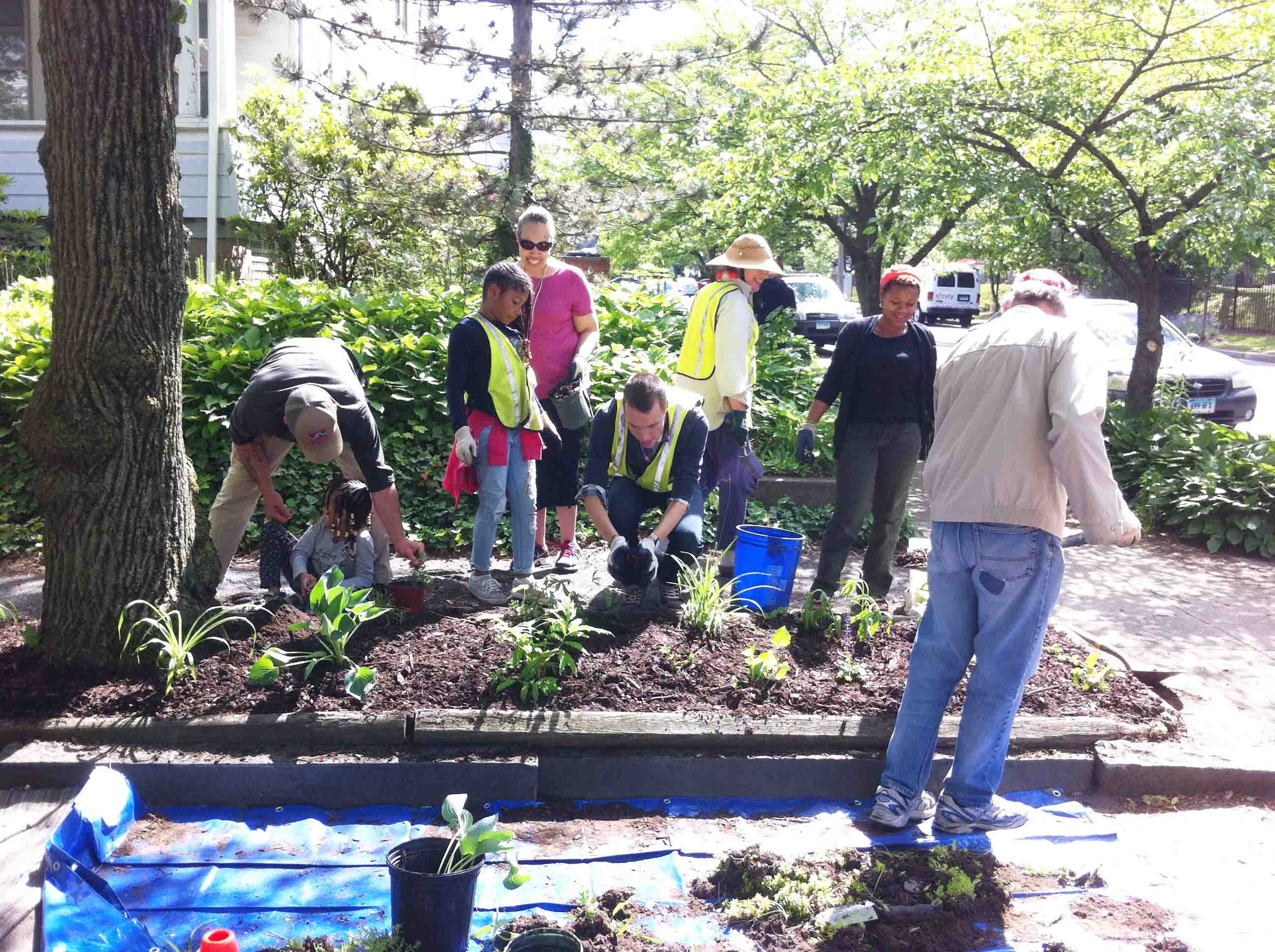
The Elm City is about to get a little greener with the help of a new Environmental Protection Agency grant.
The Environmental Justice Small Grant will provide $30,000 in funding to the New Haven Urban Resources Initiative — a nonprofit partnership between the University and the New Haven community — to plant trees, maintain community parks and build bioswales, which are sidewalk tree wells that filter silt and pollution from surface water runoff. The grant was announced on Nov. 1 by the EPA.
“The city has worked exceptionally well with [the Urban Resources Initiative] for many years to expand its network of bioswales and maintain a rigorous tree planting and replacement program — I congratulate [the Urban Resources Initiative] on the grant it received from the U.S. EPA and look forward to our continuing partnership,” Mayor Toni Harp said in a statement to the News. “Beyond its excellent field work, the outreach and education efforts of [the Urban Resources Initiative] help ensure continuity in New Haven going forward with regard to environmental stewardship and sustainability.”
Administered by the EPA, the Environmental Justice Small Grants Program aims to support and empower communities working on solutions to local environmental and public health issues, according to its website.
The Urban Resources Initiative’s GreenSkills program, which began in 2007, engages local communities to address local air- and water-quality issues in collaboration with the city government. The city’s engineering department, for example, determines the locations and designs the structure for bioswales, while the Urban Resources Initiative recruits workers to make them a reality, according to Colleen Murphy-Dunning, director of the initiative.
City engineer Giovanni Zinn ’05 explained that the city uses bioswales to divert water from the stormwater system and prevent sewer overflow in the event of heavy rain, which might otherwise cause polluted water to flow into the Long Island Sound. The soil processes in the bioswales also help improve the quality of rainwater runoff, according to Zinn.
“We look at bioswales … as the first path when we have a drainage issue,” Zinn said. “[They] often not only provide a lot of environmental benefits, but are less costly as well.”
Murphy-Dunning said the Urban Resources Initiative is also working with the Department of Parks, Recreation and Trees to plant trees and improve community gardens. Local residents and businesses often play a significant role in determining the locations of the trees, making tree-planting requests to the Urban Resources Initiative.
Another major feature of the GreenSkills Program is the benefits it provides to its interns. The Urban Resources Initiative collaborates with Common Ground High School, the Sound School and Emerge, a nonprofit that works with formerly incarcerated people, to provide green job-training opportunities, according to Murphy-Dunning. Interns learn how to plant trees and install bioswales and gain a deeper understanding about how bioswales function and what problems they can address, she said.
Murphy-Dunning acknowledged that it will “always be a challenge” to sustain the Urban Resources Initiative’s efforts over time. She noted that although the Urban Resources Initiative’s staff are Yale employees, the programs are financially independent and rely on funding from outside the University.
“It is really important … to have broad support from many sources, whether they are federal, state or local sources, public or private sources,” Murphy-Dunning said.
Zinn noted that the city government has hired the Urban Resources Initiative as a contractor, and Murphy-Dunning said that city has been a major funding source for the initiative.
The Urban Resources Initiative was established in 1989 by William Burch, a professor of forestry and environmental studies.
Malcolm Tang | jiawei.tang@yale.edu
Interested in getting more news about New Haven? Join our newsletter!







